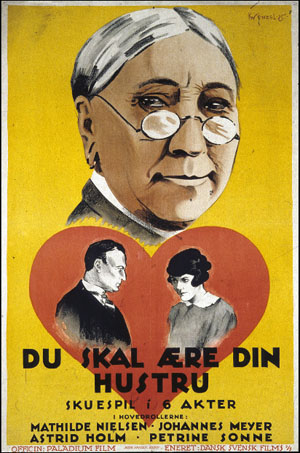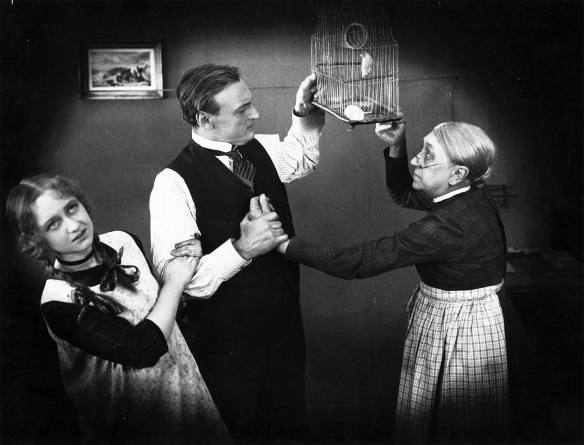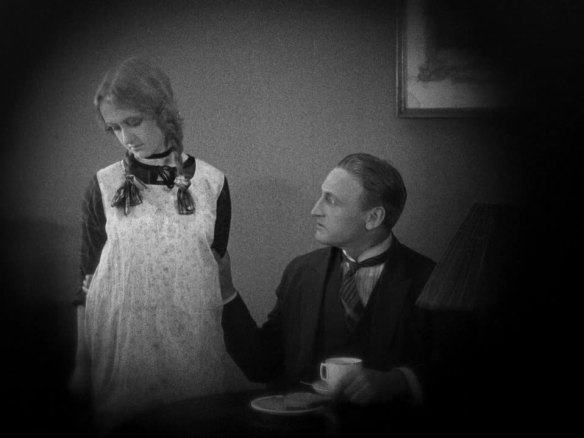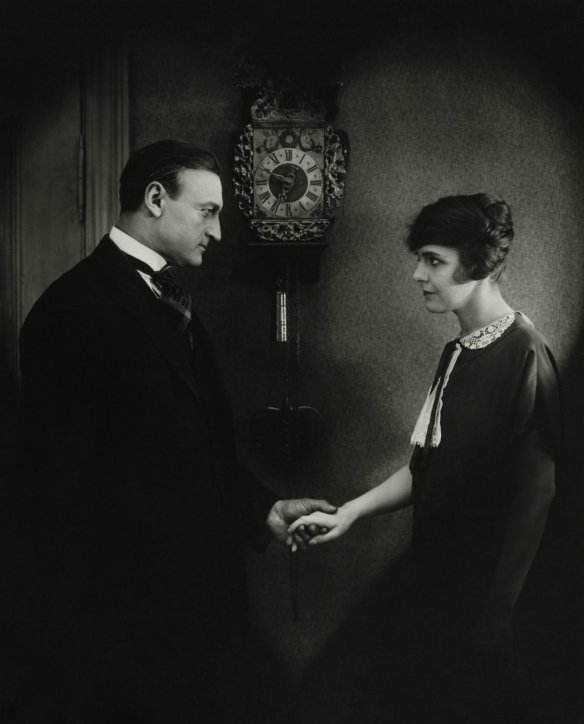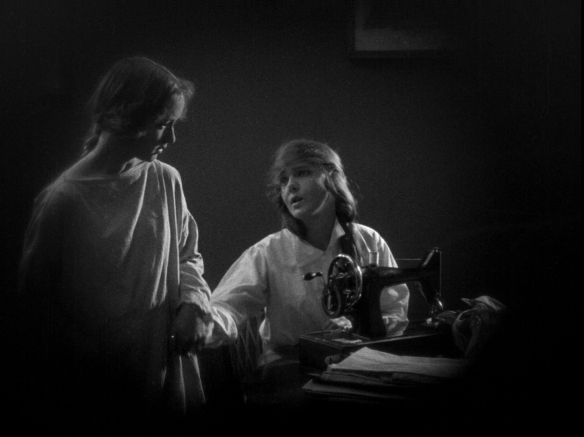In brief: Deceptively simple, Dreyer displays a mastery of his craft that is anything but and, if the film’s final message feels a tad “easy”, it helps that it is ensconced in a firm fairy-tale universality ****
source: British Film Institute (BFI) Blu-Ray
I’d kinda forgotten how good this film actually is. It probably doesn’t help that, being a Dreyer film, this quiet domestic drama lays within a filmography that also contains: Satan; vampires; ghosts; witches; public executions; grand existential rifts; religious fervour; attending your own funeral; resurrection; a personification of Death picking up some careless bikers; and, um, Gertrud. Really, when you list it out like that, Dreyer sounds more like he’d be in line to helm something under the Marvel Comics banner than to be categorised alongside Ozu and Bresson as one of cinema’s most rigorous formalists.
Of course, while Master of the House might sound less exciting than his other films, it is no less skillfully made. In a sense, it bears similarity to F.W. Murnau’s Sunrise: A Song of Two Humans (which would come along two years later), except that while Murnau carved out a tale of tested and true love using every visual effect and lavish set-design trick in the manual, Dreyer’s film unapologetically dwells within the domestic, with the bulk of the film set in a single, unadorned dwelling area. In that vein, what really impresses is the fluidity of Dreyer’s editing and the nimble eye of his camera, which dances around the space with ease, skillfully elaborating the quotidian vitality of the setting without ever making this goal feel humdrum or ordinary. Despite the uniformity of location and the small cast, this never feels like a ‘filmed play’, and while it utilises the ‘tableaux composition'[1] that was popular at the time throughout much of European silent cinema, it also breathes freely with effective use of close-ups etc.
As for the film itself, it is a simple parable that walks a delicate line, holding to drama while infusing a gentle comedic spark. The film could easily have been pure farce, dealing as it does with a disaffected husband who has the running of the household dumped upon him, but Dreyer and co. really aren’t interested in the hijinks of such a scenario. They assure us early on that, for all his bad behaviour, the husband is a fundamentally good man who is just down on his luck. His relationship with his wife is never really in peril either. They do truly love each other and things weren’t always like this. Like Sunrise, Master of the House has its eyes on a universal dialectic, a fairy-tale of sorts albeit with a more pragmatic twist. Unlike other grand essays on passion’s mad pull, Sunrise or Epstein’s Cœur fidèle among them, this film is more concerned with the nuts and bolts of a relationship. What happens after all the doe-eyed declarations and grand emotional outpourings are in the past. It asserts that marriage is an institution of two and that both must pull their weight. And if its gender politics are not exactly radical, they specifically assert that a married woman’s lot should not be belittled simply because society deems it fit not to grant her a wage. Although honestly, anyone who might want to feel aggrieved about such a traditional message might want to bear in mind that just a year prior, Dreyer released Michael, one of the earliest and most assured entrants in the “queer” cinema canon. And gay people have kitchens too, y’know!
And now a quick quibble about available editions, since we’re presented with an unusual case here. The BFI Blu-Ray provides both the Danish and English editions of the film separately on the same disc. They are identical in terms of editing and content, however the English-language intertitles, while approved by Dreyer, do often change the tone, sometimes comically so. The character names being anglicised – Viktor to John, Ida to Mary, Mads to Nana etc. – is, in context, actually one of the more gentle alterations. Other aberrations include simplifying a math equation for English speakers (17 X 19 becomes 8 X 9) and, funniest of all, a totally different introductory text that does away with the Danish version’s description of the husband and wife as heroes ennobled by their domesticity and instead states that the film is, and I quote, “the story of a spoilt husband, a type that is extinct in this country, but which still exists abroad.” This is pretty fantastic since it turns on its head the notion that engaging in a foreign territory’s art equates to open-mindedness by injecting a sly shot of xenophobia. No doubt the translator’s wife asked him to do it and, being so gosh-darned sensitive, he just couldn’t refuse her.
In any case, the Criterion edition in the US is kind of an English-friendly hodge-podge, creating entirely new English-language intertitles that are new translations of the original Danish intertitles. Now while it’s worth noting that the actual original Danish intertitles are lost, their text is known so they have been re-created on the BFI disc as part of the film’s larger restoration. Meanwhile the BFI include both options for the viewer- the original Danish intertitles with English subtitles carefully overlaid and the original English intertitles, with their looser/mathematically simpler/a bit racist/historically significant interpretation. For my money, the BFI approach is more complete and preferable although I sure would like to hear David Bordwell’s contribution to the Criterion disc.
[1] The ever-brilliant David Bordwell expands on this better than I ever could here: http://www.davidbordwell.net/essays/nordisk.php

